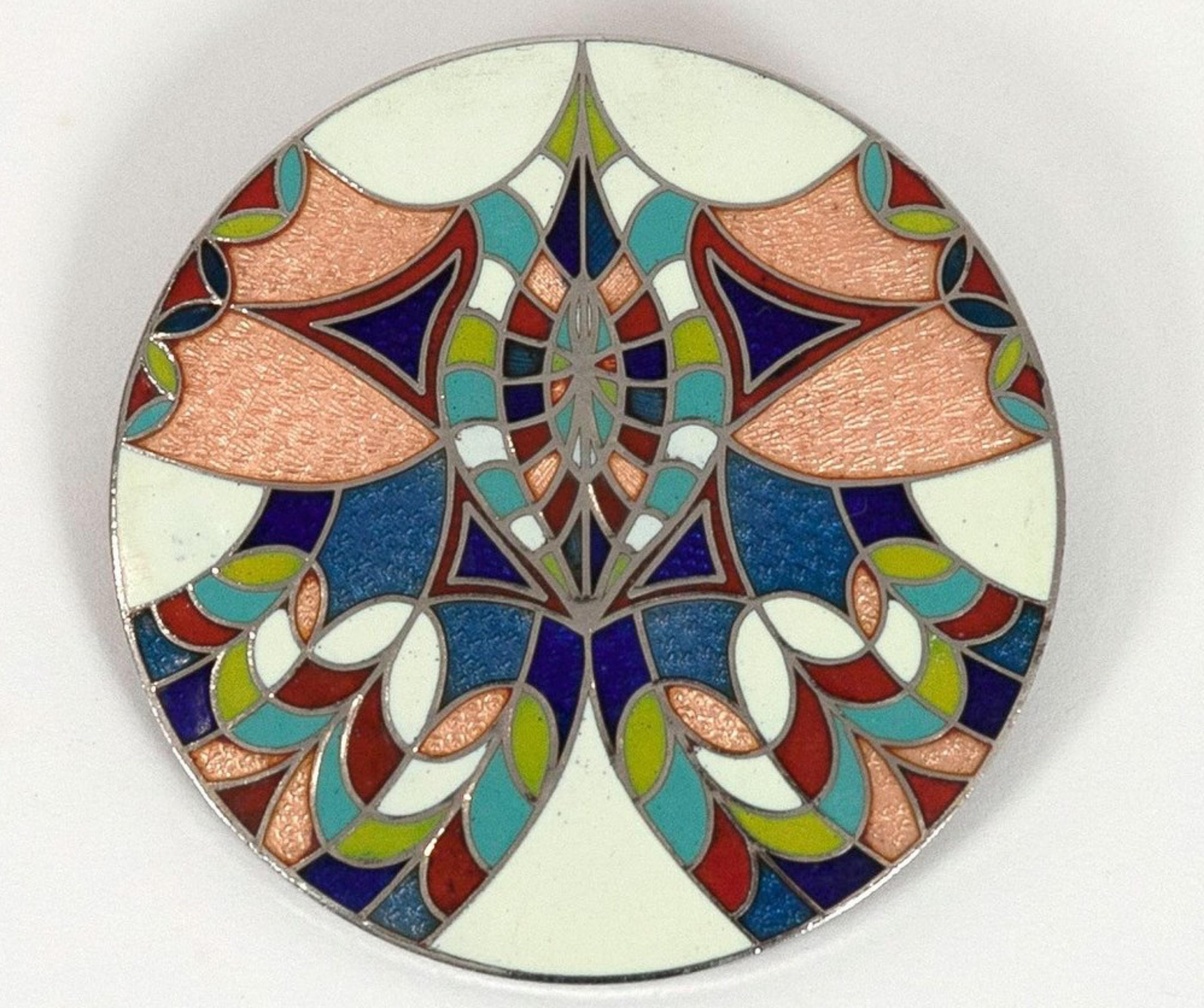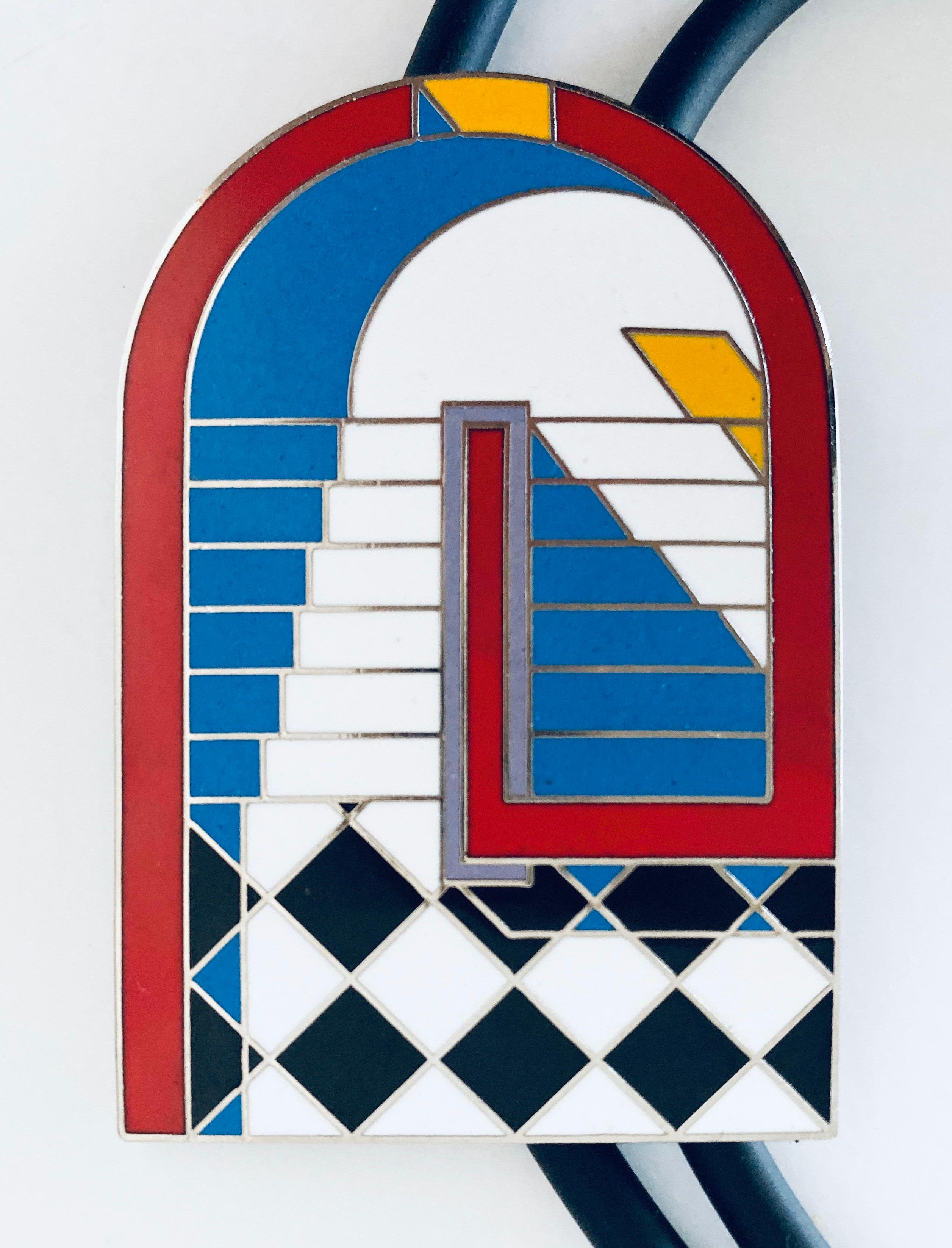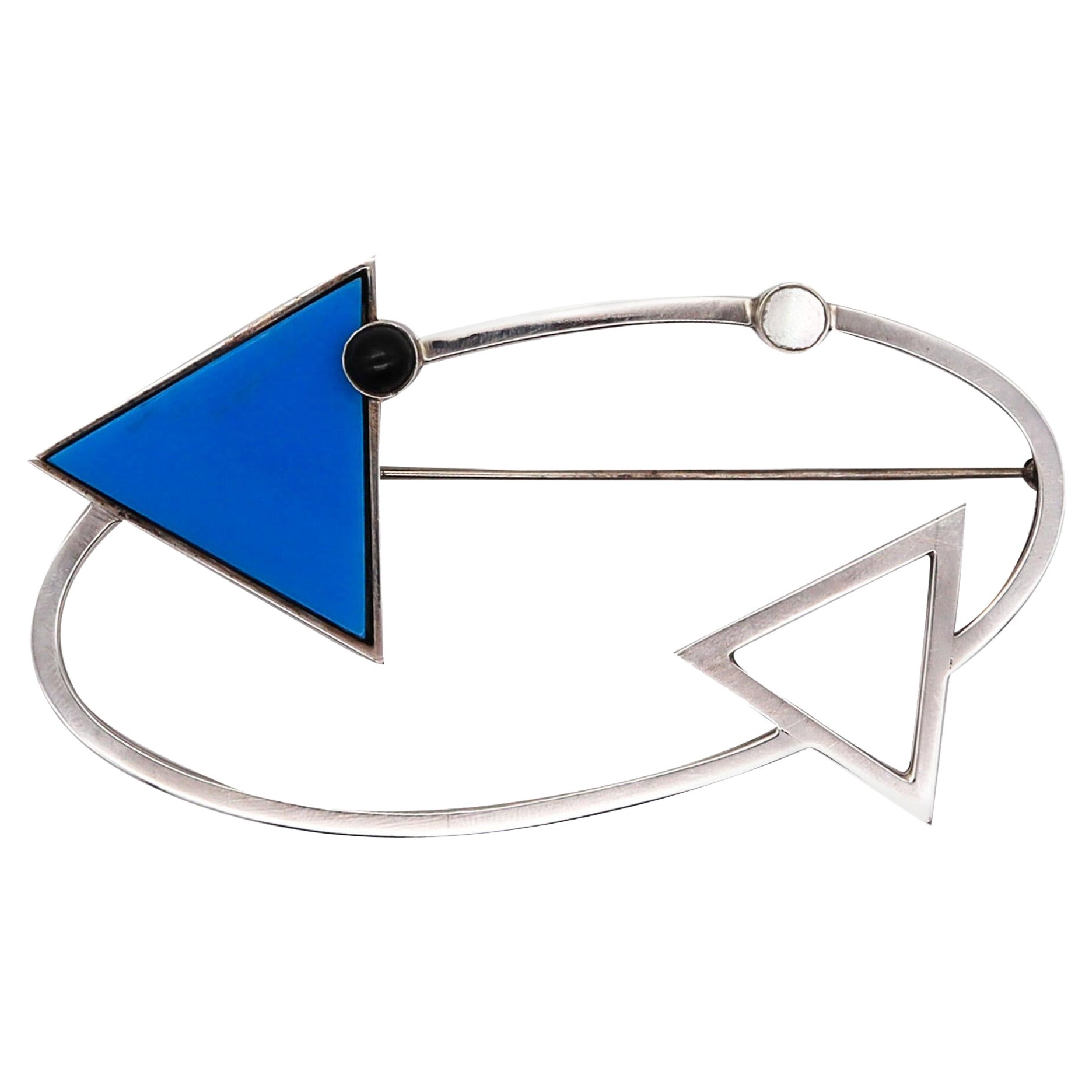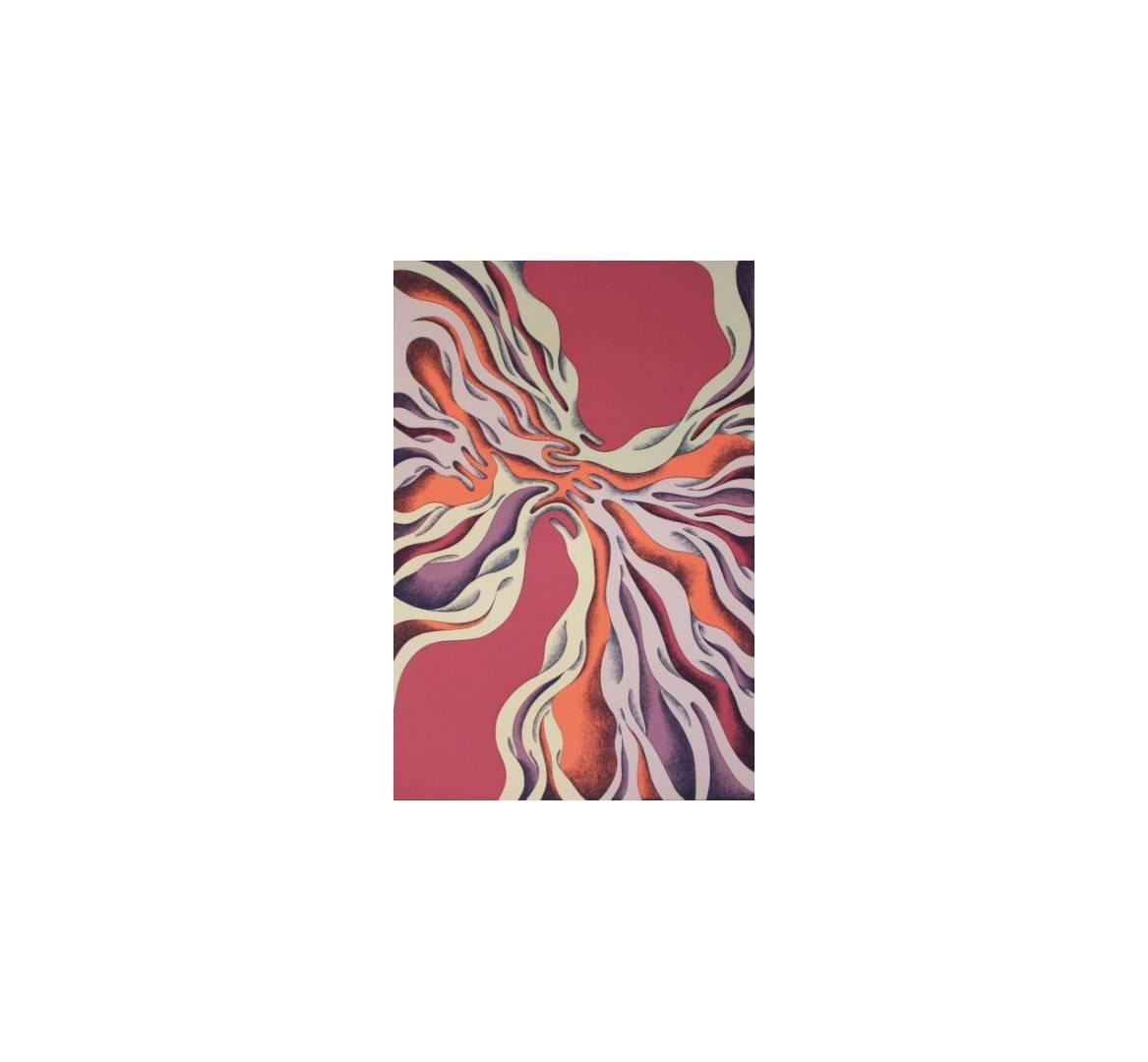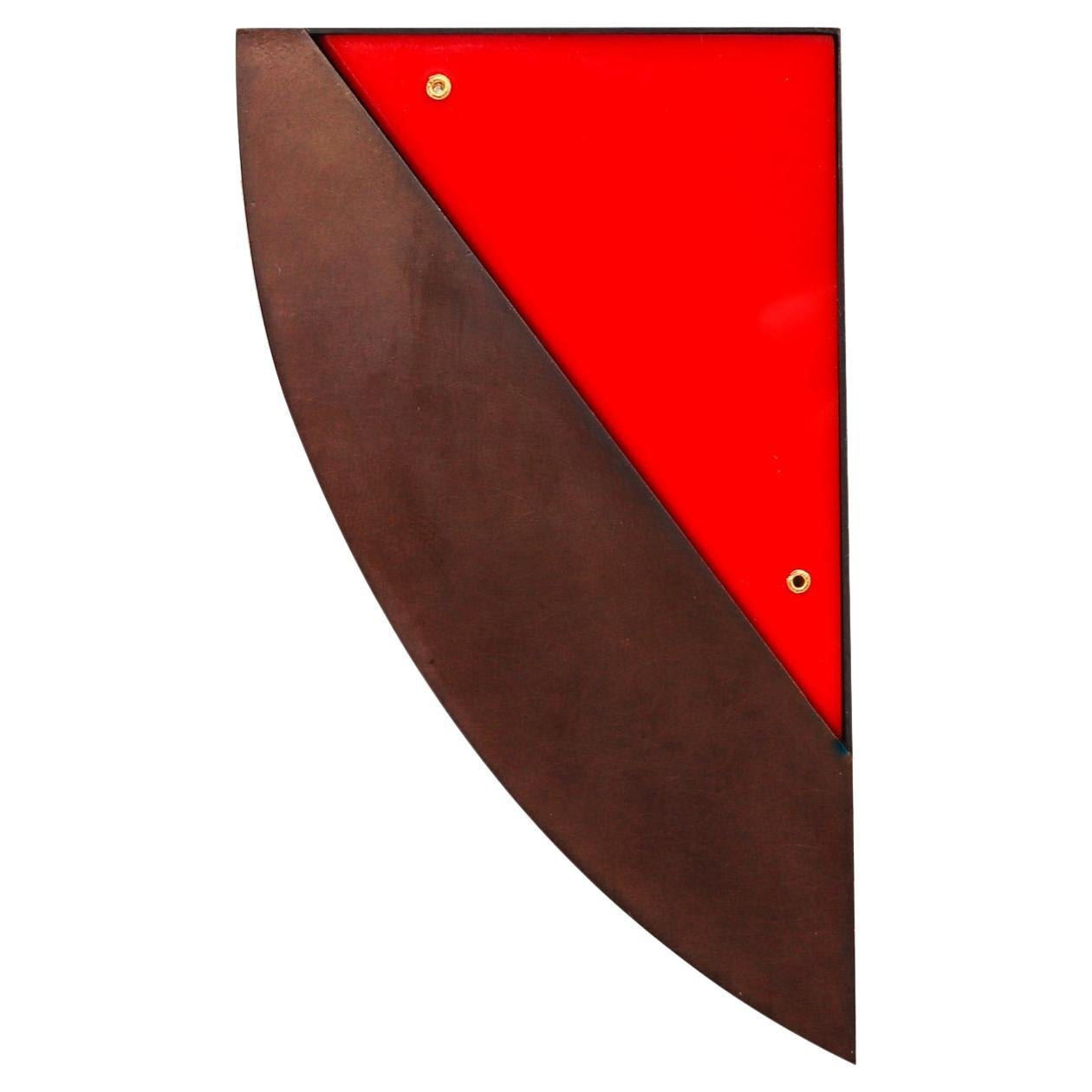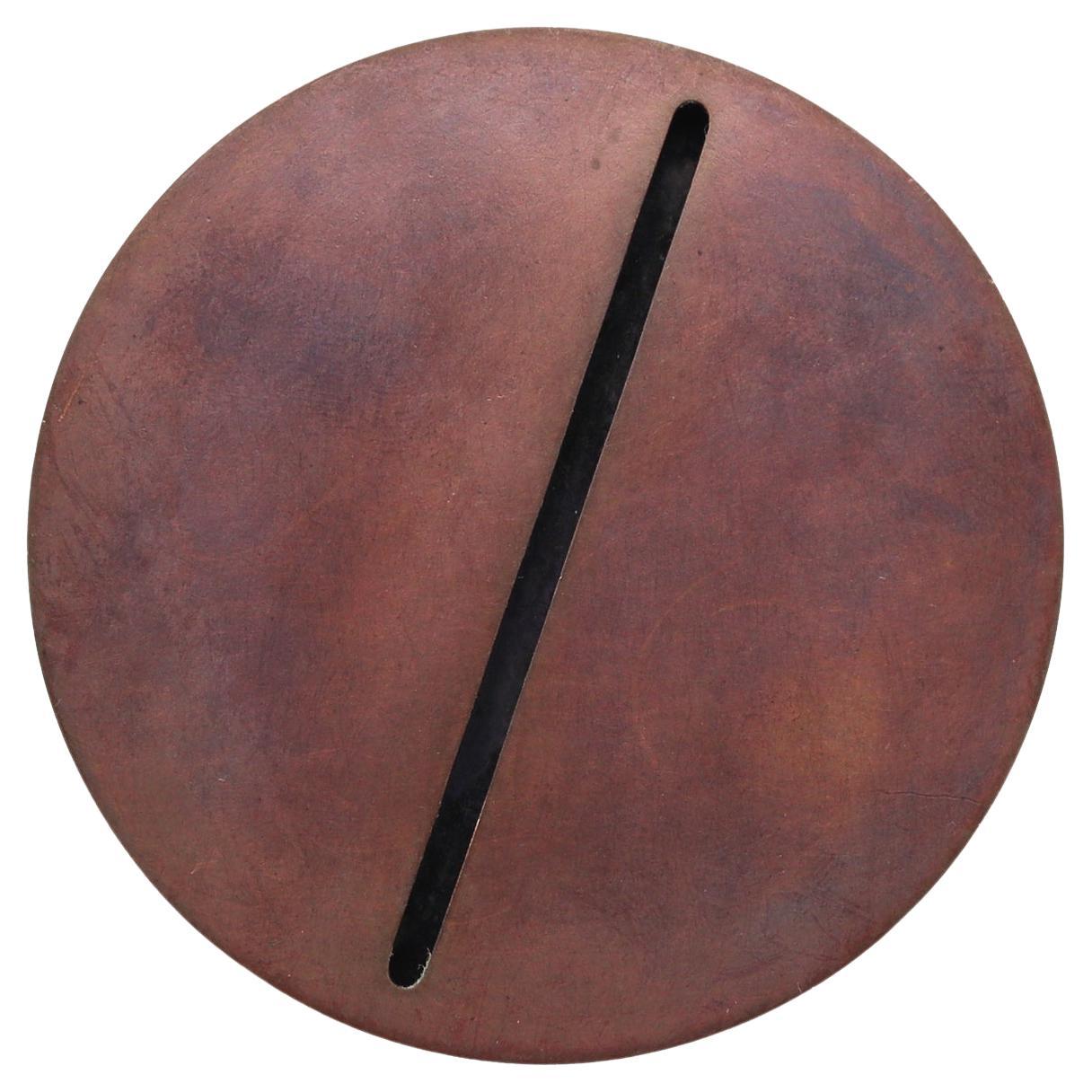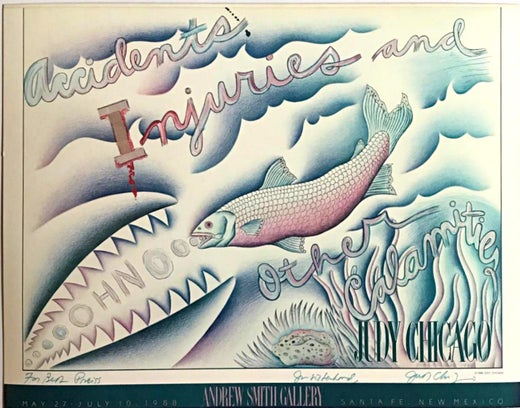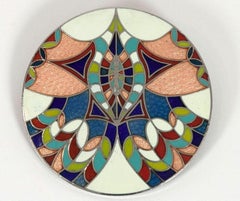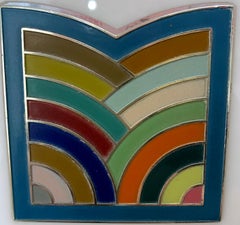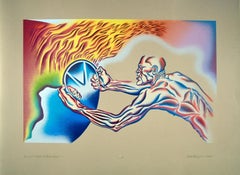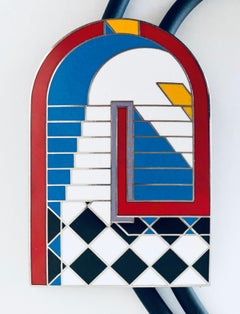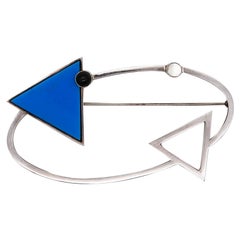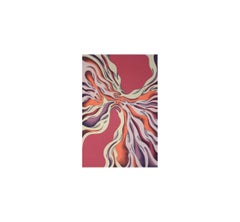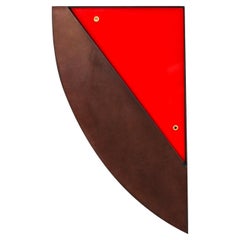Items Similar to Holocaust Remembrance Logo Pin enamel Pendant in bespoke box incised artist name
Want more images or videos?
Request additional images or videos from the seller
1 of 3
Judy ChicagoHolocaust Remembrance Logo Pin enamel Pendant in bespoke box incised artist name1993
1993
$250
£189.69
€216.90
CA$349.18
A$388.24
CHF 202.72
MX$4,725.86
NOK 2,586.61
SEK 2,423.53
DKK 1,618.75
Shipping
Retrieving quote...The 1stDibs Promise:
Authenticity Guarantee,
Money-Back Guarantee,
24-Hour Cancellation
About the Item
Judy Chicago
Logo Pin and Pendant, 1993
Enameled pin with pendant loop in original presentation box
2 1/2 × 2 1/2 × 1/5 inches
Judy Chicago's incised name and date on the verso
Comes in original presentation gift box
Poignant enameled Holocaust Project Logo pin & pendant based on the logo designed by Judy Chicago for the Holocaust Project: From Darkness into Light
More about pioneering artist Judy Chicago
Judy Chicago (born Judith Sylvia Cohen; July 20, 1939) is an American feminist artist, art educator, and writer known for her large collaborative art installation pieces about birth and creation images, which examine the role of women in history and culture. During the 1970s, Chicago founded the first feminist art program in the United States at California State University, Fresno (formerly Fresno State College) which acted as a catalyst for feminist art and art education during the 1970s. Her inclusion in hundreds of publications in various areas of the world showcases her influence in the worldwide art community. Additionally, many of her books have been published in other countries, making her work more accessible to international readers. Chicago's work incorporates a variety of artistic skills, such as needlework, counterbalanced with skills such as welding and pyrotechnics. Chicago's most well known work is The Dinner Party, which is permanently installed in the Elizabeth A. Sackler Center for Feminist Art at the Brooklyn Museum. The Dinner Party celebrates the accomplishments of women throughout history and is widely regarded as the first epic feminist artwork. Other notable art projects by Chicago include International Honor Quilt, Birth Project, Powerplay, and The Holocaust Project. She is represented by Jessica Silverman gallery.
Chicago was included in Time magazine's "100 Most Influential People of 2018".
- Creator:Judy Chicago (1939, American)
- Creation Year:1993
- Dimensions:Height: 2.5 in (6.35 cm)Width: 2.5 in (6.35 cm)Depth: 0.5 in (1.27 cm)
- Medium:
- Movement & Style:
- Period:
- Condition:
- Gallery Location:New York, NY
- Reference Number:1stDibs: LU1745215984662
Judy Chicago
Judy Chicago (born 1939) is an American feminist artist, art educator, and writer known for her large collaborative art installation pieces about birth and creation images, which examine the role of women in history and culture. Chicago's work incorporates a variety of artistic skills, such as needlework, counterbalanced with labor-intensive skills such as welding and pyrotechnics. Chicago's most well known work is The Dinner Party, which is permanently installed in the Elizabeth A. Sackler Center for Feminist Art at the Brooklyn Museum. Her work is in the collections of the British Museum, Metropolitan Museum of Art (New York), National Gallery (Washington DC), LACMA, Hammer Museum, San Francisco Museum of Modern Art, and Tate Modern.
About the Seller
5.0
Platinum Seller
Premium sellers with a 4.7+ rating and 24-hour response times
Established in 2007
1stDibs seller since 2022
443 sales on 1stDibs
Typical response time: 2 hours
- ShippingRetrieving quote...Shipping from: New York, NY
- Return Policy
Authenticity Guarantee
In the unlikely event there’s an issue with an item’s authenticity, contact us within 1 year for a full refund. DetailsMoney-Back Guarantee
If your item is not as described, is damaged in transit, or does not arrive, contact us within 7 days for a full refund. Details24-Hour Cancellation
You have a 24-hour grace period in which to reconsider your purchase, with no questions asked.Vetted Professional Sellers
Our world-class sellers must adhere to strict standards for service and quality, maintaining the integrity of our listings.Price-Match Guarantee
If you find that a seller listed the same item for a lower price elsewhere, we’ll match it.Trusted Global Delivery
Our best-in-class carrier network provides specialized shipping options worldwide, including custom delivery.More From This Seller
View AllHildegarde of Bingen, gorgeous Cloisonne Brooch, jewelry The Dinner Party signed
By Judy Chicago
Located in New York, NY
Judy Chicago
Cloisonne Brooch of Hildegard of Bingen from The Dinner Party, 1987
Limited Edition Cloisonne brooch/pin with clasp on the back and Judy Chicago's incised signature and ...
Category
1980s Feminist Mixed Media
Materials
Metal, Enamel
Centennial Medal for the Metropolitan Museum of Art
By Frank Stella
Located in New York, NY
Frank Stella
Centennial Medal for the Metropolitan Museum of Art, 1970
17 Color enamel on rhodium plated bronze plaque (incised signature an...
Category
1970s Abstract More Art
Materials
Metal, Enamel
Judy Chicago, Through the Flower Iconic signed/n silkscreen Feminist art, Framed
By Judy Chicago
Located in New York, NY
Judy Chicago
Through the Flower, 1991
Silkscreen on Stonehenge natural white paper with deckled edges
Publisher: Unified Arts, Albuquerque, New Mexico
Signed, titled and numbered 24/...
Category
1990s Feminist Abstract Prints
Materials
Screen
Driving the World to Destruction (iconic silkscreen, signed, #35/50) Wood Frame
By Judy Chicago
Located in New York, NY
Judy Chicago
Driving the World to Destruction, 1988
Silkscreen on wove paper
Pencil signed, titled, dated and numbered 35/50 on the front
Included with this work is an elegant hand ...
Category
1980s Feminist Figurative Prints
Materials
Screen
Chevron Collage, Signed, de-accessioned from the Honolulu Museum of Art, Framed
By Kenneth Noland
Located in New York, NY
KENNETH NOLAND
Untitled, for Trustees of the Honolulu Museum of Art, 1984
Mixed Media collage with silver and colored foil on board.
Signed on verso (back) with personal inscription. "for Twig and Laila" (Trustees of the Honolulu Museum of Art), Deaccessioned from the Honolulu Museum of Art Collection
Inscription done in black marker and reads: "A Little Exercise For Twig and Laila With Thanks For A Wonderful 3 Days At ' Cedar House' On The 'Big Island'... 1 Sept 1984 Honolulu Hawaii."
Frame included
Measurements
Framed:
12.5" x 12.5" x .3"
Artwork:
8.75" x 8.75"
This reflective Chevron collage was de-accessioned by the Honolulu Museum of Art. In 2018, it was exhibited in the show "On Black Mountain: The Bauhaus Legacy in America", April 5, 2019-April 27, 2019 at the Sager Braudis Gallery in Columbia, Missouri, and is reproduced in the exhibition catalogue.
Unique signed and dedicated mixed media collage with silver and colored foil on board by the important Color Field painter Kenneth Noland. It's quite a dazzling work, combining color field, geometric abstraction with Op Art, as the work changes appearance and color with the reflected and refracted light. - sometimes appearing light; sometimes darker. See the photos -- there's a light one and a darker one - and they both depict the same work. What's so impressive is that this work literally changes color depending on how the light reflects against it. The artist wrote a personal and heartfelt inscription on the verso to "Twig and Laila". (Twig (sic), which the artist deliberately misspells, is Thurston Twigg Smith, former publisher of The Honolulu Advertiser, who was married to New York philanthropist Laila Twigg Smith. Laila had lived in Hawaii since 1970, where she and her husband had put together a substantial collection of contemporary art. Unfortunately, the two divorced in 1996 and soon after she returned to New York. Two years later, in 1998, Laila died of liver failure at the young age of only 53. Laila was a major philanthropist and art collector who moved from Manhattan to Hawaii. She was a board member of the New Museum of Contemporary Art in New York and a major donor the Honolulu Museum in Hawaii. Laila donated the present Ken Noland...
Category
1980s Abstract Geometric Mixed Media
Materials
Foil
$15,000 Sale Price
25% Off
Limited Edition Porcelain Ashtray in hand designed bespoke box printed signature
By Frank Stella
Located in New York, NY
Frank Stella
Porcelain Ashtray in hand designed bespoke box, 2000
Porcelain dish in original box
Limited Edition of 2000
Signed in plate, Artists incised signature on box.
4 1/2 × 3...
Category
Early 2000s Contemporary More Art
Materials
Porcelain, Mixed Media, Board
You May Also Like
Vintage Chicago Architect Stanley Tigerman Cloisonne Enamel Art Necklace Acme
Located in Surfside, FL
This is new old stock vintage Jewelry from the legendary Acme Studio collection, which created many revolutionary jewelry items. It was handmade in the 1980s using the intricate cloisonné process, an ancient technique for decorating metal; hence any imperfections within the colors are to be expected and inherent which makes it unique and one-of-a-kind.
This piece is worn around the neck, like a bolo tie.
The Memphis Designers...
Category
1980s Pop Art More Art
Materials
Metal, Enamel
Mardi Jo Cohen 1989 Memphis Geometric Brooch in .925 Sterling with Gemstones
Located in Miami, FL
Brooch designed by Mardi Jo Cohen (1959-).
Beautiful one of a kind piece, crafted by the renowned American silversmith artist Mardi Jo Cohen, back in the 1989. This sculptural geometric brooch was made with Memphis design patterns in solid sterling silver, with high polished finish. Fitted with a hinged bar and a mechanical lock to wear as a brooch. This can be also wear in a chain.
Gemstones: Mounted in bezel settings, with round cabochon cut gemstones such; black onyx and white nacre.
Materials: Silver, Lucite, Gemstones and Formica.
Weight: 24.95 Grams, (15.99 Dwt).
Measurements: 61 mm by 98 mm (2.40 x 3.85 Inches).
Hallmarks: Stamped with the maker's mark, the silver assay mark and signed, "MARDI JO COHEN 89 STERLING SILVER".
Mardi Jo Cohen was born in 1959. Her works can be found in the Yale University Collection, the National Museum of American Jewish History and the Museum of Art and Design in New York, as well as other prominent museums and galleries coast to coast. Often seen in the form of serving utensils and jewelry is rarely seen let alone available to acquire.
The Memphis style
Was emerged in 1981, when the Italian designer and architect Ettore Sottsass founded a group of artists and designers called Memphis. Bob Dylan’s song 'Stuck Inside of Mobile with the Memphis Blues Again' was playing on repeat during the group’s first meeting, which led to the group being named 'Memphis'. After the inaugural meeting, the group decided that they would meet again in February 1981. The members brought over 100 drawings with them, picturing a variety of bold, colorful designs with multiple stylistic influences. The Memphis Group went on to create furniture, fabrics, patterns, ceramics and other products in a distinctly Postmodern style that blended stylistic traits of 1950s kitsch, Art Deco, and Pop Art. If you love unashamedly brash and bold colors and patterns, you’ll be very happy to hear that the Memphis Style, the design style pioneered by the 1980s Memphis Group, is very much back in vogue.
In 1985 Cleto Munari, set up a workshop-studio for the manufacture of unique objects in collaboration with some of the greatest architects, designers, artists, and writers in the world, among them Mario Botta, Alessandro Mendini, Alvaro Siza Vieira, Mimmo Paladino, Sandro Chia, and Dario Fo...
Category
Vintage 1980s American Modernist Brooches
Materials
Onyx, Silver, Sterling Silver
$718 Sale Price
20% Off
Free Shipping
Reaching/Uniting/Becoming Free by Judy Chicago
By Judy Chicago
Located in Morton Grove, IL
Judy Chicago
Reaching/Uniting/Becoming Free
1979
Silkscreen
artist proof from the edition of 100
signed
dated
Very rare!
Born Judy Cohen in Chicago, Illinois, in 1939, Chicago att...
Category
1970s Abstract Abstract Prints
Materials
Screen
Thomas Gentille 1970 Geometric Red Lucite Brooch In 18kt Gold Bronze And Copper
Located in Miami, FL
A pendant-brooch designed by Thomas Gentille (1936-).
A sculptural piece of wearable art, created in New York city by the artist and jewelry maker Thomas Gentille, back in the late...
Category
Vintage 1970s American Modernist Brooches
Materials
Gold, 18k Gold, Yellow Gold, Bronze, Copper
Thomas Gentille 1970 Geometric Inclined Fracture Pendant Brooch 18kt Gold Bronze
Located in Miami, FL
A pendant-brooch designed by Thomas Gentille (1936-).
A sculptural piece of wearable art, created in New York city by the artist and jewelry maker Thomas Gentille, back in the late ...
Category
Vintage 1970s North American Modernist Brooches
Materials
Gold, 18k Gold, Yellow Gold, Bronze
$4,400 Sale Price
20% Off
Free Shipping
Paloma Picasso For Tiffany & Co. Star Geometric Brooch in 18k Gold
By Paloma Picasso for Tiffany & Co.
Located in Miami, FL
Paloma Picasso, for Tiffany & Co. geometric star motif pin brooch in 18k solid yellow gold.
Stamped: '750' - 'Paloma Picasso' - 'Tiffany & Co.'
✔ Metal: 18K Yellow Gold
✔ Weight:...
Category
1990s North American Modern Brooches
Materials
18k Gold, Yellow Gold
More Ways To Browse
Holocaust Art
Vintage Feminist Art
Vintage Enamel Pins
Vintage Dinner Party
Judys Vintage
Dinner Party Art
The Dinner Party
Vintage Womens Pins
Silverman Gallery
Vintage College Pins
Rodeo Chaps
Sage Tucker Ketcham
Saupe Ted
Shino Teapot
Shipibo Pot
Tatyana Vafina
Tiffany And Co X Spalding Basketball
Tiffany Studio New York Belt Buckles
